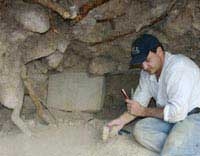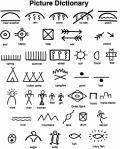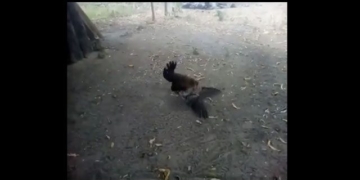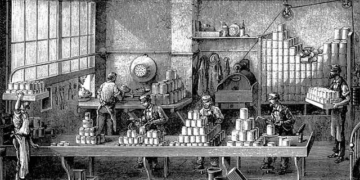Experts are amazed by the unique taste of champagne submerged with a shipwreck off the coast of Finland.
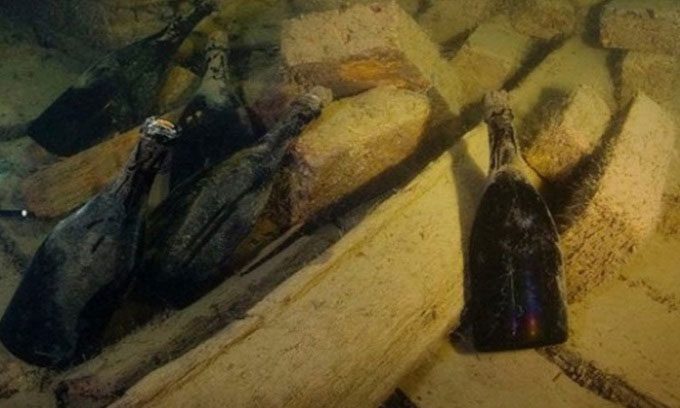
Champagne bottles on the shipwreck. (Photo: Ancient Origins).
In 2010, a group of divers discovered a shipwreck from 1852 in the Åland Islands of Finland. They were surprised to find 145 bottles of champagne at a depth of 48.8 meters. What was even more remarkable was that the bottles were still full and had a very unique flavor, according to a professor of food biochemistry. Although all the labels had faded, wine experts examined the inside of the corks and found branding images that allowed them to identify their origin. Many of the champagne bottles came from the Juglar maison, which disappeared in 1829 when their vineyard was taken over by a competitor. Additionally, there were 47 bottles from the Veuve Clicquot brand, according to the Guardian.
Two years after the discovery, 11 bottles of champagne were auctioned for a total of $156,000 in Mariehamn, located in the Åland Islands between Finland and Sweden, where the Föglö wreck was found. Notably, one bottle of Veuve Clicquot sold for as much as $16,342. This was before the wine in the bottles was analyzed and tasted by experts. Currently, the value of the wines retrieved from the wreck could reach $190,000.
Philippe Jeandet, a professor of food biochemistry at the University of Reims, located in the heart of the champagne-producing region of France, was given small samples from three bottles for analysis. His research, published in the Proceedings of the National Academy of Sciences, concluded that “after 170 years submerged in the depths of the sea under almost perfect conditions, these sleeping champagne bottles have awakened to tell us a new chapter in the story of wine production.”
A group of experts initially described the wine in the bottles with terms like “animal scent,” “wet hair,” “bad,” and sometimes “terrible.” However, after allowing the wine to settle in a glass and oxidize, it emitted a more pleasant aroma, spicy and reminiscent of leather. Dominique Demarville, the champagne production manager at Veuve Clicquot, tasted the wine three times and discovered notes of fruit, truffles, and honey. He concluded that this is one of the finest champagnes in the world. “I have never tasted a wine like this in my life. The aroma lingered in my mouth for 3 – 4 hours after tasting,” Jeandet shared with Smithsonian.
Veuve Clicquot was so intrigued by the rediscovery of their bottles that they decided to recreate similar conditions by submerging dozens of champagne bottles in the same location in the Åland Islands. Some of these bottles will remain there for 40 years. The winemaker believes that the deep sea could be the perfect environment for aging champagne. With salinity levels 20 times lower than the Atlantic Ocean and a stable temperature of 4 degrees Celsius, the Baltic Sea provides an optimal aging environment, according to Veuve Clicquot.









































